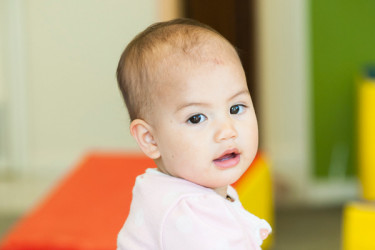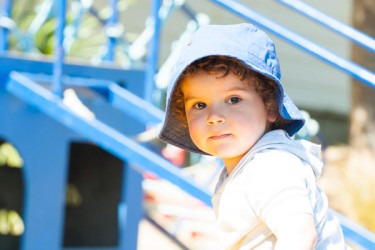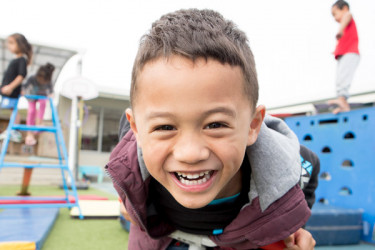Mana Whenua | Belonging
Strand 2
This section is from pages 31–35 of Te Whāriki: He whāriki mātauranga mō ngā mokopuna o Aotearoa Early childhood curriculum. This resource is part of the “Te Whāriki strands and principles” set. See the resource carousel below for more.

Ko te whakatipuranga tēnei o te mana ki te whenua, te mana tūrangawaewae, me te mana toi whenua o te tangata.
Children and their families feel a sense of belonging.
ECE settings are safe and secure places where each child is treated with respect and diversity is valued. All children need to know that they are accepted for who they are and that they can make a difference. Feeling that they belong contributes to their wellbeing and gives them the confidence to try new experiences. Children experience an accessible and inclusive curriculum that offers meaning and purpose.
Transitions into and across settings are thoughtfully planned and recognise what children bring with them; they need to know that their ECE setting is part of their wider world and inclusive of their parents and whānau. Children are more likely to feel at home if they regularly see their own culture, language and world views valued in the ECE setting. It is therefore important that whānau feel welcome and able to participate in the day-to-day curriculum and in curriculum decision making.
Respect is shown for Māori views of the world, the natural environment, and the child’s connection through time to whenua, atua Māori and tīpuna.
The identities, languages and cultures of Pasifika children are strengthened by acknowledging the interconnectedness of people, place, time and things.
Belonging is nurtured through social interaction with kaiako and other children and by respecting the achievements and aspirations of each child’s family and community.
- Mana whenua | Ko te whakatipuranga tēnei o te mana ki te whenua, te mana tūrangawaewae, me te mana toi whenua o te tangata | Mokopuna relationships to Papatūānuku are based on whakapapa, respect, and aroha.
- Belonging | Children know they belong and have a sense of connection to others and the environment
GOALS Children and their families experience an environment where: |
LEARNING OUTCOMES Over time and with guidance and encouragement, children become increasingly capable of: |
EVIDENCE OF LEARNING AND DEVELOPMENT These outcomes will be observed as learning in progress when, for example, children demonstrate: |
|---|---|---|
Connecting links with the family and the wider world are affirmed and extended |
Te waihanga hononga | Making connections between people, places and things in their world |
|
They know that they have a place |
Te manaaki i te taiao | Taking part in caring for this place |
|
They feel comfortable with the routines, customs and regular events |
Te mārama ki te āhua o ngā whakahaere me te mōhio ki te panoni | Understanding how things work here and adapting to change |
|
They know the limits and boundaries of acceptable behaviour |
Te mahi whakaute | Showing respect for kaupapa, rules and the rights of others |
|
See Materials that come with this resource to download Te Whāriki Early childhood curriculum: Mana whenua | Belonging – Strand 2 (.pdf).
Examples of practices that promote these learning outcomes
Kaiako are cognisant of the concept of tangata whenua and the relationship that Māori have to each other and to the land. This guides kaiako relationships with whānau, hapū, and iwi. Kaiako share appropriate histories, kōrero, and waiata with mokopuna to enhance their identity and sense of belonging.
Kaiako support mokopuna to engage respectfully with and to have aroha for Papatūānuku. They encourage an understanding of kaitiakitanga and the responsibilities of being a kaitiaki by, for example, caring for rivers, native forest, and birds.
- Infants
- Toddlers
- Young children
- Considerations for leadership, organisation, and practice
- Questions for reflection

- Language, key words, signs and routines that infants are familiar with at home are used in the ECE setting. The environment is language-rich and includes familiar rhymes, songs, chants and experiences.
- A regular but flexible pattern is established for the day, which includes time outside and visits to see people and places.
- Each infant has a familiar sleeping space and meal area. Infants’ favourite things are available to them.
- A familiar and unhurried kaiako has primary responsibility for each infant so that they can anticipate who will welcome and care for them. The timing and pace of caregiving practices is guided by the infant.
- The curriculum is flexible enough to ensure that an infant’s needs and preferences for a particular person or way of doing something can be met.
- There is a reassuring emphasis on the familiar, with new elements introduced thoughtfully into the curriculum.
Kua kite rānei koe?
About this resource
This section from pages 31–35 of Te Whāriki: He whāriki mātauranga mō ngā mokopuna o Aotearoa Early childhood curriculum discusses the Mana whenua | Belonging strand, examples of practices that promote the learning outcomes under this strand for infants, toddlers and young children, and provides considerations for leadership, organisation and practice. This resource is part of the “Te Whāriki strands and principles” set. See the resource carousel for more.











